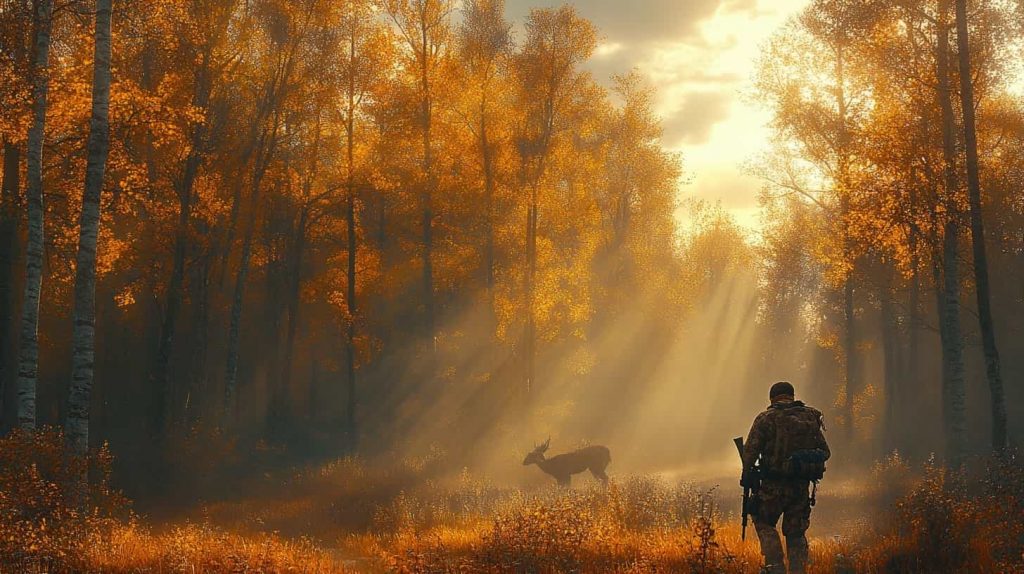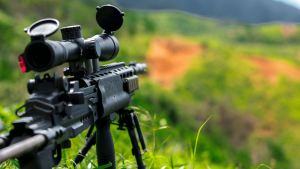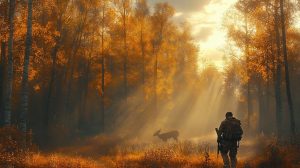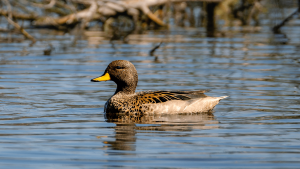The Ultimate Guide to Hunting Different Types of Game

Hunting is an ancient tradition that has evolved over time, blending skill, patience, and knowledge of the wild. Whether you are tracking deer in the dense forest, calling in waterfowl at dawn, or waiting for a wild boar in the moonlight, every type of hunt requires its own unique strategy. Understanding the behavior of different animals, selecting the right gear, and adapting to various hunting environments are crucial elements for a successful hunt. This guide will explore techniques for hunting a variety of game species and provide essential tips to improve your experience in the wild.
Deer Hunting: Strategy and Stealth
Deer hunting is one of the most popular forms of hunting, requiring a combination of patience, precision, and understanding of deer movement patterns. White-tailed deer, mule deer, and elk are commonly pursued across North America.
Best Techniques for Deer Hunting
- Scouting the Area: Learning the terrain and identifying deer trails, bedding areas, and food sources will increase your chances of a successful hunt.
- Tree Stands and Ground Blinds: Elevated tree stands provide better visibility and reduce the likelihood of being detected by deer. Ground blinds offer excellent concealment at eye level.
- Scent Control: Deer have an exceptional sense of smell. Using scent-blocking sprays and positioning yourself downwind of your target helps to minimize detection.
- Shot Placement: Ethical hunting requires precise shots. Aim for the vital organs—the heart and lungs—for a quick and humane kill.
Deer hunting is often best in the early morning or late evening when deer are most active. The rut (mating season) is an ideal time to hunt as bucks are less cautious and more focused on finding does.
Wild Boar Hunting: Power and Persistence
Wild boar, also known as feral hogs, are intelligent and aggressive animals that require a different approach than deer. They have thick hides, sharp tusks, and can be highly unpredictable.
Best Techniques for Wild Boar Hunting
- Tracking and Baiting: Boars are nocturnal and highly mobile, so tracking their movement patterns and using bait stations can increase your chances of an encounter.
- Hunting with Dogs: Some hunters use trained dogs to locate and corner boars, making it easier to take a shot.
- Powerful Firearms: Boars are tough animals that require high-caliber rifles or slug shotguns to ensure an effective kill.
- Spot-and-Stalk Method: If hunting in open areas, moving quietly through brush and using cover can provide opportunities to get close without detection.
Due to their aggressive nature, hunting wild boar can be exhilarating but dangerous. Always be prepared for an unpredictable charge.
Waterfowl Hunting: Precision and Calling
Ducks and geese provide a different kind of challenge, requiring a combination of calling skills, decoys, and shooting accuracy. Waterfowl hunting often takes place in wetlands, lakes, and coastal regions.
Best Techniques for Waterfowl Hunting
- Using Decoys: A well-placed spread of decoys can attract flocks of ducks and geese into shooting range.
- Calling Strategies: Mastering duck or goose calls to imitate natural sounds increases the likelihood of bringing birds closer.
- Camouflage and Concealment: Waterfowl have sharp eyesight. Wearing proper camouflage and using blinds or natural cover is essential.
- Shotgun Selection: A 12-gauge shotgun with the right load is ideal for waterfowl hunting, ensuring clean and effective shots.
Early mornings and cloudy days are often the best times for waterfowl hunting, as birds are more active and willing to land in your decoy spread.
Predator Hunting: The Art of Calling
Predator hunting includes animals like coyotes, foxes, and bobcats, which require a different skill set compared to hunting prey animals. These species are highly intelligent and cautious.
Best Techniques for Predator Hunting
- Electronic Calls and Mouth Calls: Imitating distress sounds of small animals can lure predators within shooting range.
- Long-Range Rifles: Predator hunting often requires precise shots at longer distances. Rifles chambered in .223 or .308 are commonly used.
- Night Hunting: Many predators are nocturnal, making night vision and thermal optics valuable tools for spotting and tracking.
- Wind and Scent Control: Just like deer, predators rely heavily on scent. Positioning yourself downwind is crucial.
Predator hunting helps control populations and can be an exciting challenge for hunters looking to test their skills.
Small Game Hunting: Quick Reflexes and Skill
For those new to hunting, small game species like rabbits, squirrels, and pheasants offer an excellent introduction. These animals are abundant and provide a great way to develop marksmanship and tracking skills.
Best Techniques for Small Game Hunting
- Shotgun vs. Rifle: Shotguns work best for fast-moving game like rabbits and pheasants, while a .22 rifle is ideal for precise squirrel hunting.
- Slow and Steady Movements: Small game animals are alert to movement. Moving cautiously and using natural cover can improve your success rate.
- Hunting with Dogs: Certain breeds, such as beagles and spaniels, excel at flushing out small game from dense cover.
Small game hunting is a great way to sharpen shooting skills and enjoy time outdoors without the extensive planning required for larger hunts.
Conclusion
Hunting different types of game requires a deep understanding of animal behavior, terrain, and hunting methods. From the patience needed for deer hunting to the fast-paced action of waterfowl hunting, every experience offers something unique. The right gear, proper scouting, and learning advanced techniques will improve your hunting success while ensuring an ethical and respectful approach to wildlife.
Whether you’re an experienced hunter or just starting, exploring new hunting styles and techniques will enhance your skills and deepen your appreciation for the great outdoors.




